From production of goods to production of ideas
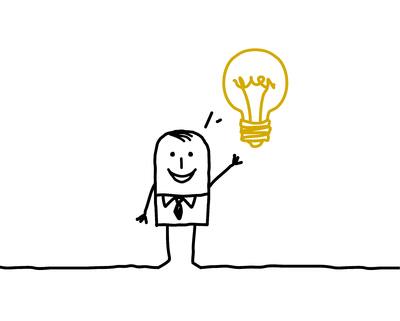
I keep it short this week. I just want to share with you how I envision that the power of ideas will beat the power of production and this could 'liberate the third world' (although I hate this denomination).
Since the industrial revolution not much has changed. The producers of physical goods are still very powerful multinational corporations such as Shell, Volkswagen, Sony, Unilever or Inditex. However, with the emergence of the internet, this dominant position for these firms is slowly vanishing. And this has everyhting to do with the power of ideas over the power of production.
Because of initiatives such as kickstarter, everyone with an internet connection and a good idea can rise up as successful entrepreneur. This is still basic, but expect to see in the future kickstarter spin offs where people can also sponsor with intellectual capacity or other resources. Furthermore, Blockchain applications such as Bitcoin will enable the unbanked (billions of people) to start participating in the global money network. Think about all the chances this offers. And because of societal trends such as 3D manufacturing, production of goods transitions from global nodes to local nodes. Even better, most of us will have a 3D printer in our house in less than 10 years that enables us to print small and not too complex things which won’t require complicated production processes in different locations anymore. The big money is therefore to be made with the ideas for the 3D models, which will be the foundation for future production. Companies such as Shapeways clearly understood this and already provide a designer community which adopted new kinds of transparent earning models.
Because of improving money innvovations and improving connectivity and communication technologies, we can work with more creative minds at the same time on projects, whenever we want, wherever we want. This obviously offers great chances for plenty of 'third world countries' that don’t have an existing production and service industry yet. Every bright mind with an internet connection down there will be able to become successful in the near future. The only thing we should currently do, is empower them by providing software and equipment to participate in this emerging global ideas network. I think this is our duty after centuries of exploitation. We should at least offer them the same future chances as our kids.
When I was small, I always wanted to become inventor of great ideas. I am sure there are still many kids like I was, all over the world, and the good news is that we are now transitioning into the era where we can all become this desired persona. No matter where you are born, no matter your socio-economical background. That is also sustainability: more equal chances for everyone.
WE EXHALE CO2!
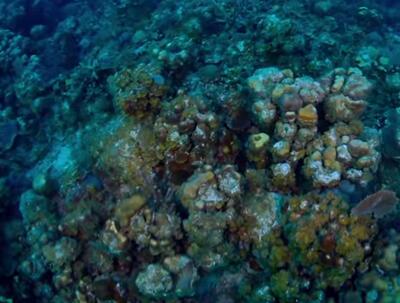
The title above is something Rush Limbaugh said during his radio show “The Rush Limbaugh Show” in the US. Paraphrasing, he said that since we humans exhale CO2 it can't possibly be poisonous or bad for us. Now, I don’t know anything about Rush Limbaugh. He’s probably clever and friendly. However, claiming that CO2 can’t be bad or poisonous since we exhale is kind of a silly statement. Childish even. A teacher I had in an ethics course at TU Delft showed us this video during a discussion on ignorance. I’m convinced that we need to take care of our planet in a better way than we have, and I do think that reducing our CO2 emissions is critical for improving our environment. But what about all these people who don’t believe this is a problem?
This morning I had a lecture in a course about infrastructure economy. My teacher, let's call him Professor X, has been giving hints almost every lecture that he does not quite believe in renewable energy. During the second hour of this lecture he let all his frustrations out on the "global warming issue" that he doesn't believe to be an issue. The lecture started with discussing internalizing of external effects and transferable emissions permits, which makes it possible for countries to trade with emissions. Professor X then showed us students about 10 graphs of empirical data showing that, in fact, the temperature on earth had nothing to do with the rise in CO2. He couldn’t contest that there is no increase in CO2 emissions, because even his data suggested that there is, but his point was that this had nothing to do with anything. Influence on temperature had to do with ocean currents and activity of the sun, not the fact that we’re releasing too much CO2. He also contested the fact that there even was something called "global warming" going on. Talking about CO2 he said it’s “not that scary at all”. He also claimed that students are currently brainwashed in school, where they learn about global warming and caring for the environment. Here I had to interrupt with a question, since I believe there are many negative effects from increased CO2 levels, not only a rise in temperature. So I said, “Professor X, what about all the other consequences? What about our oceans that absorb the higher levels of CO2 and become acidified in the process? What about coral reefs dying and populations of ocean animals becoming extinct because of this?”. To this, Professor X concluded that I need to educate myself in this area because oceans do not become acidic and coral reefs are not dying. And even if they are, they are dying because of tourists. OK. I ended the discussion there, even though my heart was beating pretty fast and adrenaline was pumping through my body. Professor X continued explaining why renewable energy is destroying our economy. I asked him, “What is your solution to the ever-so-current energy problem?” Professor X simply said: “Stop with current business – renewables are a dead end. Go nuclear! (with Torium as fuel)”.
This lecture really got me worked up, since Professor X challenged most of my beliefs. And hey, I’m all for challenge, even though I do think that also he should read some more articles on this subject. We need to be critical thinkers and read scientific articles from both sides. But talking about this, we need to see the bigger picture. We need to zoom out. It is clear that Professor X made his arguments in relation to the economy as it looks today, where countries go bankrupt without consumption. But what if we were to change that economy? What if it was OK that for a while, during this early era of big-scale solar and wind power, we did not profit from it? What if we could change the entire system? There are so many other issues with increasing CO2 levels than “just” global warming. War and poverty are also intertwined in this big mechanism where oil and other fossil fuels are involved. It’s more than just having a warmer climate, it’s about the whole order of the world. It’s a messy thing to sort out and I certainly don't have the solution. But I'd like to be a part of it, and challenge people like Professor X.
Levers for change
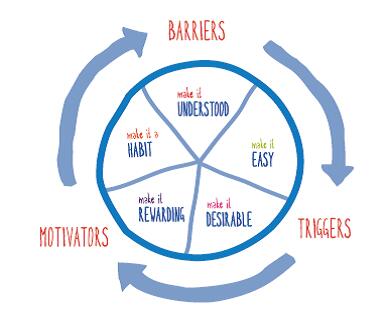
Nearing the finish line of 2014 all kinds of lists are being published. Being informed about the Guardian’s sustainable business award brought back to mind the “five levers for change”. That was the sustainable living plan Unilever published a couple of years ago.
What I considered remarkable at that time was that the company not only considered sustainable business on their account, but also showed awareness about the impact of their products for sustainable living. It’s not only production that should turn into sustainability, by taking into account use of materials and energy and fair trade. But sustainable jeans are cleaned many times by the people that wear them. Consumers’ washing, cleaning and drying behaviour is as least as decisive in the jeans’ sustainable life time. So beyond sustainable production, companies should also encourage people to use their products in a (more) sustainable way, e.g. by cleaning jeans less often, buy less and recycle textiles. Nowadays, a couple of years later it is known that we can lease jeans or shwop them ourselves. Although it may be perceived counterintuitive to business (wo)men to promote less consumption.
Nowadays some business people spread the same word as ideologists. Sustainable living should be fun, happiness and desirable. That’s what should nudge people (including us!) towards sustainable living. It should be experienced vital for people in order ‘go through walls’. Just awareness of the consequences of our unsustainable behaviour will not be sufficient. Although most marketing experts state that often change starts there. Thus, first lever: make it understood to encourage acceptance for change. Second, make change easy to establish convenience and confidence. People should know what to do, and feel confident of doing it. Remember discussions about integrating the rhythm of the day with Facebook activities, that turned out feeling natural. Moreover, doing new behaviour should fit actual or aspirational self-image and in a way confirm our relations with other people. Thus, the third lever is to make it desirable to join a sustainable life style, buy particular products etc. In one way of another, people need to know when they are doing well, they need proof and payoff. They may be rewarded by saving energy (and money) but also for example by social status. But before changed behaviour will routinize into our new habits, we need a lot of reinforcement and reminding. Only then, sustainable behaviour will become the futures social norm. In short, change is all about learning and action.
And yes, I am aware that the debate initiated by The Guardian is sponsored by Unilever. But I do believe there is a role for businesses in mainstreaming sustainability. So what?!
Leaderships means giving up control

In this article I explain my vision on leadership in the digital area of the 21st century and how leaders are essential for creating an environment where everyone feels equal and wants to follow the leader because they stand behind the same vision.
In this article I explain my vision on leadership in the digital area of the 21st century and how leaders are essential for creating an environment where everyone feels equal and wants to follow the leader because they stand behind the same vision.

In this week lecture our group had a workshop on resilient leadership and what that means in our eyes. According to Roselinde Torres many companies do not succeed in delivering successful leaders, while the investments in leadership are growing. The image of a leader as a superman who protects the company and makes all the important decisions is outdated. In the 21ste century, hierarchy as invented in the industrial revolution to increase efficiency does not fit the digital area where innovation and change happens at the bottom of the organization. Charlene Li surprised me with her contradictory, but inspirational observation that - Leadership in the digital area, means giving up control.
Charlene Li compares leadership to parenting. ‘People who successfully parent their teenagers into adulthood, eventually say to them: I know you can do this now on your own’. When in a digital age, change and innovation no longer happens at the top of the organization, leaders need to trust that their employees are able to make good decisions. In order for this to happen you need engaged employees. At the moment, only 13% of people are engaged in their work. How do you create an environment where you feel confident enough to let go control?
Charlene Li offers three fundamental principles in creating such an environment. The first principle is to create a culture of sharing. Employees need two way non-hierarchal conversations to gather information to base their decisions on. The second principle is to practice followership by engaging people in projects and create a network of followers. The third principle is how you use your network to make meaningful decisions. Collaboration platforms where you listen to your employees on how to improve your organization are important to create engaged employees.
Her talk made me aware that the attitude of leaders determines everything for the creation of innovation. Leaders must shape an environment where employees feel as equals and managers become facilitators. Power does not come from being in control, but from people who voluntary follow you because of your vision and who you are as a person. I believe that is why Phoneblocks of Dave Hakkens has become such a powerful movement, that google is now actually working to make this innovation happen. For the greater good to make sustainability happen, we need open innovation and collaboration without the fear that someone will steal our ideas. Ideas get a thousand times better, once shared since the idea is improved from different perspectives. We need transparency, so everyone can join and help us to solve challenges. Luckily this actually fits the idea of the digital area where information rapidly can reach the whole world. I believe that competition between companies and mass production has gotten us into problems concerning sustainability. Although competition often drives companies to design better products, I believe that for sustainability it limits growth. Change is not happening fast enough, because of secrecy. As Einstein said, "We cannot solve our problems with the same thinking we used when we created them." For sustainability to be implemented we need to create a transparent and collaborative environment, where it is not about individuals but communities to succeed. After all the world is from us whole and we can only fix this together. In my eyes: Leadership means starting a relay, where you feel confident that your team will win through all the individual efforts.
FREECYCLE!

The idea is very simple. Freecycling is when a person passes an item that does not need anymore to another person that needs it.
The idea is very simple. Freecycling is when a person passes an item that does not need anymore to another person that needs it.
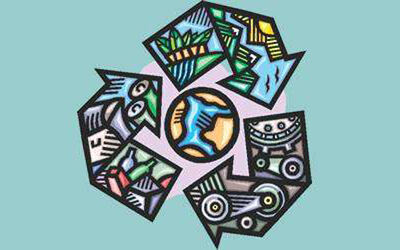
I wanted to introduce to you this recent trend on the sustainable reuse of materials and products. It is called “Freecycling” and it is awesome!
The idea is very simple. Freecycling is when a person passes an item that does not need anymore to another person that needs it. (Freecycle.net) From old electronic devices to clothes, freecycling is a way more sustainable practice than throwing away our items. It is even a more sustainable practice than recycling.
It has at least 2 main good points of sustainability: it prevents not only these items to be landfilled but also it helps people that are in need of specific items. It also cuts down the need for manufacturing the items that are donated.
In the last few years new platforms for making this new sustainable concept have been popping out. Worldwide, thousands of groups are already working to make this happen. On the website “TrashNothing.com” (TrashNoting.com), you are able to find the groups in your city or the closest ones.
Even for a small municipality like Texel, it would a great idea to create a community online to share old items. It would cut down the amount of items and materials that would otherwise be incinerated or landfilled. Before throwing away stuff Texel people could create a post on this platform and before buying something they could look if someone’s posted the item you are in need of.
Bibliography:
Freecycle.net, consulted on December 21, 2014, http://www.freecycle.net/
Trash Nothing!, consulted on December 21, 2014, http://www.freecycle.net/
Vancouver: voted as the most sustainable city in the world for 2014

What does it take for a city to be recognized as a green city? What are the criteria to be the world’s greenest cities? How easy is to cover those criteria? Would you like to live a green city?
What does it take for a city to be recognized as a green city? What are the criteria to be the world’s greenest cities? How easy is to cover those criteria? Would you like to live a green city?

Ariel Schwartz writes: "Take all of the best qualities of these municipalities--effective road management, cap and trade, sustainable energy, excellent public transportation, a zero waste program, and so on--and you have the dream city. That dream city may not be a reality yet, but the first step to creating one (or many) is learning from cities that already excel in specific areas."
The number one greenest city in the world for 2014 is Vancouver in Canada. The Greenest City 2020 Action Plan has been responsible for such a high position. As part of the city’s objectives to be the world’s greenest city, the city local council works with the residents (in my opinion the most important actors) in enacting sweeping changes in handling waste, ecosystem and carbon management.
More specifically, Vancouver’s next steps for 2020 are divided to the following categories:
- Energy: The reduction of carbon emissions by 33% compared to 2007, and by 90% compare to 2050 and the award to a leading city in fighting climate change is one of their most important goal. Beyond the reduction, Vancouver aims to increase the use of renewable energy. Already, more than 90% of the city’s energy is using renewable energy, mostly hydroelectricity. Wind, wave power and solar farms also are energy sources to be used in the plan. Finally, they are planning to create the SkyTrain, which is the world’s longest automated light rapid transit system.
- Building environment: All new industrial/ municipal construction has to be carbon-neutral and the existing buildings have to improve their efficiency by 20%.
- Mobility: Vancouver also aims to totally transform its transport system with the development of a new and innovative Bikeway and the 28 km long Seaside Greenway projects improving walking, biking but also public transportation. More than 400 km of bike routes, downtown, walking and cycling is the preferred mode of transportation for about 5% of the population. Related to this, it aims to make the streets safer for cycling and pedestrians as well as creating a public bike sharing system. Trolley buses serve the downtown area with zero-emission buses. Finally, in transportation category, one important feature is the use of electric vehicles. While there are only 15 charging stations currently planned, city officials are planning more for the future and it is expected the electric vehicle to account for 15% of new vehicle sales in Vancouver by 2020.
- Material & Waste: They want to reduce waste heading to landfills or incinerator by 40% and simultaneously, per-capita ecological footprint by 33%. Furthermore, they are focusing on organic and local food production.
- Public Space: They are planning to plant an additional 150,000 trees so every resident lives within 5 minutes of a beach, park, greenbelt or other open space
- Health and Happiness: They will beat WHO's (World Health Organization) drinking water and clean air standards
- Business- Leisure and Knowledge: In business field, they want to create 20,000 new green jobs in order to become a center for green business.
Writing this last column about the most sustainable city in the world, I tried to categorise their further- future steps according to our Texel sub-systems. Although Texel differs greatly from Vancouver, I was wondering if we, as a Sustainable Engineering Development team, are able to fulfil and realise our objective converting the Texel Island in a totally sustainably and 100% self-sufficient place.
Do you think that after our Action Plan, Texel could be the greenest city in the world for 2015?
E.G
http://www.greenuptown.com/get-to-know-the-top-ten-greenest-cities-in-the-world-for-2014/
http://www.ecomagination.com/top-five-most-sustainable-cities-in-the-world
http://www.planetizen.com/node/65005
http://www.greencitytimes.com/Sustainable-Cities/vancouver-greenest-city-2020.html
Spread the word of sustainability

Coming back home for holidays I spent time with my family, friends and a lot of people that are not familiar with the meaning of sustainability and what we, as students of TU Delft, know. Being in the Netherlands, a country where sustainability is widely promoted, and getting together with other students who study about the sustainable development, makes us believe that everybody would think in the same way.
However this is not true, as not many people from other countries have realized the importance of sustainability. Countries like Greece, Italy, Spain, etc. even though they have departments of sustainability in the universities, the researches and their outcomes stay inside the universities. Therefore, common people stay uninformed and continue not paying much attention on how much energy they spend and their overall (un-)sustainable behavior. For example, the lights stay on even when nobody is in the room, all transportations are done by car, hot water is spent even when not necessary and a lot of food is being cooked and eventually wasted – mainly due to the large family dinners during vacations.
Acknowledging the environmental consequences is the first step, acknowledging the ways to have an environmentally friendly behavior is the second and most important step. Simple things, like turning off the lights, use the public transport, use the hot water wisely and reuse the food that is left by making new combinations will help to start a new way of living while protecting the environment and the sources. What is more, if the bills of electricity, water and gas are not included in the rent of the house (as happens in many cases in Germany, Netherlands, Switcherland, etc.), will help people understand how much energy they spend and what they should reduce.
Thus, whenever we are around people that don’t know about sustainability, we shouldn’t miss the chance of informing them and spreading the word! Take advantage of your holiday to help people understand and save the environment.
Bring sustainability to the people: c’est le ton qui fait la musique
Soon we will be going to Texel. We will search for new information and we will probably present our ideas to the local people. Although our ideas are made with the best intentions and although we try to fit the people and the context, it is still possible to make big mistakes. Miscommunication could be one of the main causes of this. Why?
The island is a completely different part of the Netherlands than the places where we, students, come from. We are all university students and about the same age and with an interest for sustainability. The people of Texel have an entirely different background; they live on an island, are probably not studying at a university and are not necessarily interested in sustainability. Though they have a very strong ‘islander’ feeling, which we don’t have. Their motives for being on the island are thus completely different than ours.
The customs are likely to be subtly different that ours. I regularly experience a minute cultural difference when I am going back to my parents who live in a rural area in the east of the Netherlands. The neighbouring farmers there communicate differently than what I am used to in Delft. Their rhythm of communication is slower and the way of putting yourself in a conversation is a bit different.
I expect a similar kind of differences with the people on Texel. I think it is important to keep this in mind while communicating with them. Our ideas could be great, but when the locals are not addressed in the right way, it is likely for the ideas to fail.
“C’est le ton qui fait la musique”.
Edward T. Hall has written a book about this. In “The dance of Life” he describes the cultural differences between ‘white’ Americans and people descendent from Pueblo Indians. The way in which people interact socially is completely different. Hall talks about many projects that have been introduced by ‘white’ Americans to help the Pueblo descendants. Many of those have eventually failed due to misunderstanding and a lack of knowledge.
I don’t mean to say that the Texel people are totally different. I just try to underline the awareness we all should have when working on the island. How can we communicate so that our ideas have the best effect and how can you get the most useful information? How can we address the people the best so that they are more open to the ideas we suggest?
I think that when we are able to address the Texel people in the right way, we can have a much more open conversation. They probably will evaluate the ideas with less prejudice and this will have a positive effect on the end result.
Windmills run on subsidies instead of on wind
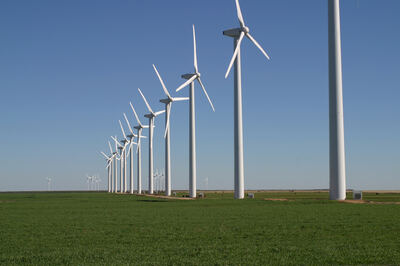
Windmills run on subsidies instead of on wind, is one of the remarkable statements of our Prime Minister Mark Rutte during election campaign. In the discussion on sustainable energy costs and subsidies are returning arguments. Wind farms are expensive, solar panels are expensive, subsidy is expensive, are statements that are commonly made. That windmills only cost money is of course emphasized by companies who have an interest in the fossil industry, like energy companies that run on coal or oil. A coal power plant is for example less profitable as the renewable energy increases.
Nevertheless, in several articles is mentioned that wind energy is not just an expense. The wind turbines are not as efficient as they could be, but they do provide money. From an article by Mark Bale can be concluded that new wind turbines run on both wind and subsidies, but older wind turbines only work on wind. He calculated that a wind turbine on land costs 4 cents per kWh and delivers 6 cents per kWh. After 15 years the subsidy will stop and the turbine will run almost for free, at the maintenance cost to be precise.
The subsidy in renewable energy, should not only be seen as an expense but more as an investment. An investment of the society to generate a new way of energy production. IKEA agrees that as a society we need to invest in renewable energy. They announced that they will build their first wind farm consisting of nine wind turbines. Previously the furnishing store has already invested in wind power by buying up existing wind farms in Germany and France. The government should follow the example of IKEA.
Luckily the government has decided in September to invest in renewable energy anyway. Three mega wind farms should be built in front of the Dutch coast. According to the ministers Henk Kamp (Economic Affairs) and Melanie Schultz (Infrastructure and Environment) the cost will be reduced significantly, through the clustering of new wind farms. Five windfarms in total will be build divided over three large areas. According to Kamp, The windfarms will deliver a total savings of 3 billion euros, the next 15 years. The development will start with the first park at, next year. Hopefully this is the beginning of a more sustainable Netherlands.
Samsø as precedent for Texel?
column week 6
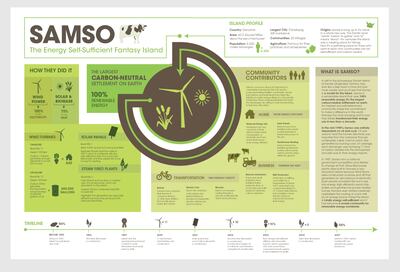
Only 2 weeks to go until we’ll be heading for Texel. I’m really curious if we can succeed in designing a self-sustaining socio-technical system by the end of the week and what the Tesselaars will think of our proposals. This week I was interested to see if something similar has already been done elsewhere. I remembered that I once read an article about a self-sustainable Danish island, which made me think of Texel. Could this be an example for us?
The Island I’m talking about is named Samsø and has about 4000 inhabitants. The island is about a quarter of the size of Texel and this also corresponds with the number of people living there: 4000 on Samsø compared to 13.600 on Texel. The tourist sector is also quite big with 500.000 nights spent each year. Although the ratio inhabitants versus tourists is smaller, this island is pretty similar to Texel. They began in 1997 with the transition and by the end of 2005 Samsø was self-sufficient in terms of energy. Although we are aiming for more than “just” self-sufficiency in terms of energy, it is interesting to see how they got the inhabitants enthusiastic for the transition. (More information on the sustainable interventions that were taken on Samsø can be found here, I will not elaborate them in this column.)
The first reason for this successful transition are the efforts of one man: Søren Hermansen. Without his vision on sustainability and his ideas on how to create jobs on the island the transition would not have happened. However, the fact that wind turbines are owned by 450 inhabitants and local farmers was crucial for public support during the realisation process. This community based ownership was possible because banks were generous with providing loans since the Danish government offers a fixed price for renewable energy, reducing the investment risk. Because of the huge financial benefits for the owners, 93% of the inhabitants chose to take part in the project and accepted the visual impact of the wind turbines. In my 4th column I also referred to a similar approach on a community owned renewable energy project in Delft and proposed this for our design on Texel.
Samsø is an even better example of how a self-sustainable design can generate public support to increase its feasibility. I should however make a remark on the fact that the island pretends to be self-sufficient in terms of energy. This is only because the island produces more electricity than it consumes, and besides initiatives of sustainable fuels such as rapeseed oil, most cars and tractors still run on fossil fuels. Self-sufficient, but still not sustainable. Electrical cars can be the solution to this downside; but this raises a recurring question about the willingness of people: how can inhabitants be convinced to drive electrical cars without providing another governmental subsidy?
So could Samsø be an example for Texel? We can definitely learn from this project, especially in the way it is realised, but we cannot copy it. For example: the way public support is generated. This is because of the financial benefits for the inhabitants and not because of their sustainable vison. Thereby, the island needs an overproduction of renewable energy to sell to the mainland and to make profits for the inhabitants of Samsø. Applying this to Texel would mean dozens of wind turbines and enormous investments, but above all this has nothing to do with a socio-technical system anymore.
I think a good socio-technical design solution should not be realized because it contributes to the financial wellbeing of inhabitants; a good design should improve quality of life on the island in a sustainable way. In my opinion the design for Samsø is too much about the financial benefits, although the design could not have been realised otherwise.
- Jesper
Mimicking Sunlight for Plant Growth
Key Words: Mimicry, Sunlight, LED light, Plant Growth

Nowadays is possible to plant a garden within your kitchen. Light is indispensable for plants growth. In fact, natural sunlight is the cheapest source available; however, it is not always available in sufficient quantities because of location and seasons. For instance,in areas between 40 and 80 degrees latitude the amount of daylight requiredfor appropriate plant growing is limited during the winter. Therefore, during this period,the use of artificial light has become very common in greenhouses to increaseproduction and quality. Thus, increasing costs of production. Regarding all these factors, nowadays there have been developed several systems and strategies that allow growing greens, vegetables and herbs within your home, such as growthlight.
To understand what is growthlight and how it works it is important to mention that, for the human eye, light is the visible part of electromagnetic radiation. Therefore, mostproducts for lighting are developed for human applications. For these purposes theintensity of visible light is expressed in lux. It is important to indicate that lux is a photometric unit that is basedon the average sensitivity of the human eye. On the other hand, plants have an entirely different sensitivity for light colors than human eyes. Regarding plant growing it is important to define light as small light particles, also called photons or quantum. Essentially, the energy content of photons is different, depending on wavelength. Therefore, plant growth is not determined by lux or energy,but by photons from the blue to red (400-700 nm) part of the spectrum. In summary, growthlight is a technology that has been developed to mimic the sunlight for growing plants. Thus, supplementing natural daylight to enhance photosynthesis. (PhilipsElectronics, 2010)
Currently, There have been developed some strategies and technologies in which artificial light can be used to improve growth and extend the growing season, especially regarding commercial crops. For instance, advanced LED lighting is a “smart” indoor garden strategy that mimics natural light patterns for faster growth cycles.
What is more, the interest in local food in combination of recent developments in low-power LED lighting technology and new hydroponic growing systems, has promote the development of new technologies that allow growing plants indoors. Thus, producing fresh greenery. For example, there is a new technology that is designed to help people to grow plants inside their kitchens, and it is known as a CounterCrop. This system uses led growthlight technology to achieve photosynthesis within the system. Thus, growing plants. Some other features about this system are that low water and energy are required; besides, zero transportation costs. (Countercrop, 2014)
Bibliography
Countercrop. (2014). Countercrop. Retrieved 12 30, 2014, from Countercrop: http://countercrop.com
PhilipsElectronics. (2010). Growing your profits: Horticultural lighting. Koninklijke Philips Electronics N.V.
Start young. Stay young.

It is a known fact that children are the best students; they learn way faster than adults. Where a child can take only few months to master speaking a language, the same person as an adult can take months even years. The same is also true for the language of sustainability and environment.
As a child we love animals, trees, birds, flowers, lakes and seas and all sorts of elements of nature. As adults, this affinity is reduced by the societal pressure of being someone or something, as respectable element of the society, the society that humans built for themselves. As a result, the environment takes a backdrop, and eventually suffers. What we fail to understand is that it only comes back to us.
A simple example is the industrial revolution, which has led to the extinction of various butterfly species starting from London. In the developing nations, the situation is even worse, the elephant species are under constant under threat for the ivory, the sandal wood forests are fast depleting and the musk is said to no longer be available due to the extinction of deer. Moreover, there is a threat that the cocoa production: by the year 2020, it will simply not be sufficient to the demand of the large amount of population, and the depleting resources. These are only the few news that makes it to the media.
The reason that our resources are depleting is ourselves. We as adults live in a world where profit is everything. No company wants to be left behind in the market. As a result, our resources are depleting. . The one who sells more crude oil is wealthy and hence, more respected.We are forgetting the basic values we learnt as a child, of loving the nature and living in harmony with them. The responsibility is now on us, we need to consciously make our children aware of the natural resources, our mistake of the past and the scarcity of it we learnt the hard way. We have to start young with this education and keep it that way. Or the coming generations will learn ‘a’ for ‘airplane’ and ‘z’ for ‘zombie’ and never ‘antelopes’ and ‘zebras’.
Don't Panic!

For a long time I was convinced that the ever growing world population was the main cause of global warming. I thought that sustainable initiatives were futile as long as the world’s population would keep growing and that this population growth should be the main issue to target when solving global warming. However, the documentary/talk ´Don’t panic’ by Swedish professor of global health Hans Rosling has changed my view. As the title describes we should definitely not panic about the world population.
The world population has grown in a more or less exponential way. Until the 1800’s the increase was only very little, but since the industrial revolution, the population curve has started to increase very steeply. Around the 1950’s the population had grown up to 3 billion people and nowadays we are even with 7 billion people. The increase in the last fifty years has mainly been caused by the increase in Asian countries. This increase is however declining. More and more couples choose to have only 1 or 2 children. Professor Rosling shows an example of a family from Bangladesh. The father explains that he now is able to buy everything his daughters want. If he would have more children, he would not be able to afford this. In forty years the average number of babies born per family has decreased from 7 to 2.2. In the meantime the life expectancy has increased from 50 years up to 70. This actually is a global trend, in 1963 the average amount of children per family worldwide was 5 but that has been decreasing to 2.5 at this moment. Mainly the average number of children in Asian countries has dropped. Only countries in Africa still keep the average over 2.
Professor Rosling states that, according to demographers from the United Nations, the increase in population is already declining, it will take more years to go from 7 to 8 billion than it did from 6 to 7. According to these projections the world’s population will reach a surface level of 11 billion before 2100. This is due to the fact that the number of children in the world has already surfaced (at 2 billion). The following table indicates (with rounded numbers) how the population will inevitably surface. The colors show how the age groups will evolve over time. After 2060 an extra billion is added, this is due to the fact that life expectancy will also grow in the future.
Professor Rosling has showed me that population growth is in fact inevitable. The sustainable solutions need to incorporate this population growth rather than trying to minimise it. Luckily, the average income of the world’s population is growing as well. This combination creates a great opportunity for the years to come to start a sustainable transition right now. We can predict what numbers we should account for, so we can also predict the amount of energy, food and waste the system has to be able to process.
At the end of this column I want to try and link this to Texel. Texel in this case could be seen as an example of the future world. In an interview with Antoine Maartens from Urgenda, our group has found out that the population of Texel is aging rapidly. This will mean that the population will even start decreasing in a few years. We therefore can predict the amounts that a sustainable system on Texel needs to process and this gives us the opportunity to design a system that is not only environmentally sustainable, but also sustainable for the future.
Space tourism: not just yet please
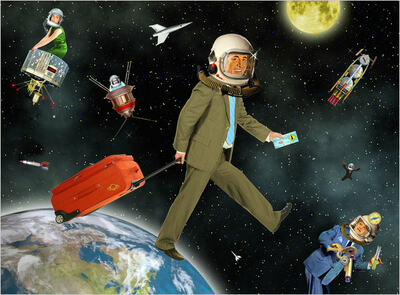
With the rapid advances in (flight) technology came of course the space travel. Truly magnificent how a rocket or other space vehicle is able to create enough thrust to break the bounds of gravity and reach outer space. Needless to say, space travel has brought us many great inventions, technologies and information. One can think of remote sensing, global navigation, satellite phone and numerous daily technologies. All very useful and interesting developments.
There is, however, an increasing downside. I'm talking about the less useful application of space travel: traveling toward space just for fun or as a leisure activity. In other words, space tourism. In short it means going on sub orbital (being weightless for a limited time) or orbital (weightlessness in at least one revolution around the Earth) flights just for the fun of it. So for no scientific, experimental or other economical reason at all. This development was 'doomed' to happen since space travel, like any other technology, can be profitable when commercialized. And thus people/companies are investing in businesses which sell traveling to space to the public.
While space travel is more dangerous due to the harsh environment and increased complexity of all involved systems, safety of the passenger is not the main theme I'm aiming at. What in my opinion is most controversial is the impact on Earth's environment as well as the space environment. Currently getting to the required altitude or orbit costs lots of energy. With the current fuel, this has a enormous impact regarding pollution and emissions.
And what is gained by this? Only that wealthy people have a 'unique' experience of weightlessness or get a great view, while facilitating companies make a nice profit. I find it hard to justify to create such an impact on the environment and Earths resources for touristic purposes, while more and more people are trying to live more conscious and sustainable. It just feels like their efforts are all destroyed for the pleasure of a small group. I find it ethically just not justifiable.
This doesn't mean I'm against space tourism. The technology might progress to a point in which it has far less impact on the environment, since space activities like remote sensing, deep space mining and orbital research are likely to continue and develop more efficient technologies rapidly. I think, however, that space flight for entertainment purposes is absolutely not justifiable at the moment, when we should think really carefully on our current way of life and how we treat the resources we have.
It's just not the time yet.
While this is specified on something as clearly an unnecessary luxury product as space tourism, it also applies to other less visible luxury products and services.
Theory meets reality
It is a few days left until we leave for Texel and now it is time to create truly good documents. Already some weeks ago we received a 4-page feedback document from Drs. Cuppen on the work we had produced so far. Using this, we totally reconstructed our document outline and now it is time to actually finalize the docs. Our aim is to have the entire document finished before the trip to Texel, and it only needs to be polished on the island. And although the weather forecast predicts a lot of rain, we hope that
On the island it will be time for our theories to be tested in reality. We hope to trigger people into thinking more in a “blue economy way” and thereby adjusting the way they treat their waste. Which is of course an old-fashioned word because it are future resources. This week was about how we as engineers from Delft (although I personally don’t really qualify here…) can contribute to sustainability. Amongst other things, we visited the YES! Delft start-up incubator.
The “start-up of the week” that I’d therefore like to finalize with is therefore one from our good old Delft and is pretty famous. But I chose them because they execute exactly the title of this column – theory meets reality at the start-up Eternal Sun. Being known as one of the most successful start-ups of both Climate-KIC and YES!Delft, Eternal Sun has created a device that emulates sunlight in the exact same wavelength as the real sun and is therefore ideal to test for instance solar panels and objects that have to endure the sun. One of the most important properties of a solar panel is its efficiency, which is pretty hard to test until you expose it to real sunlight, which is of course not always available. Sunlight has different intensities all around the world. Therefore is a machine that can truly test the performance of solar powered devices a real solution in solar panel development.
Our designs for Texel could be seen as our own solar panel that needs to be tested. And although one could argue that we lack the machine of Eternal Sun, it is our job to create a proper research design so we can metaphorically recreate the Eternal Sun machine and test the “efficiency” of our design. Let’s hope that our machine will be waterproof…!
Who is responsible for sustainability?
Lizet, column #6

Citizens of the Netherlands didn’t make much progress in their sustainability behaviour the past years. Besides, they think it is the responsibility of the government and companies to make our country greener. That is the conclusion of two researches that are presented on the Dag van de Duurzaamheid (the researches can be found here: www.ncdo.nl/formulier and here: nieuws.asnbank.nl)
The research of NCDO (van Elfrinkhof, Boonstoppel, van Gent, & Hogeling, 2014) shows that, despite the efforts of government and civil organizations trying to make citizens greener, the behaviour of citizens concerning sustainability has barely changed. For example, the government introduced the term ‘participationsociety’ and asked citizens to help their neighbours or family members a bit more. Despite this attempt, the amount of registered volunteers has not increased (still 2 out of 5 citizens volunteer). Another finding is that the positive development concerning foodwaste that manifested in 2013, did not carry through in 2014: still 1 out of 10 citizens claim to throw away food that is still eatable. The research also shows that Dutch people eat meat as often as they did in 2013. The majority (80%) of both adults as youngsters eat (almost) every day meat. The research concludes that while the behaviour of the youth remains the same, their thinking about the world did change: they are lesser convinced that people worldwide are equal and that shared responsibility is an answer to the problems in the world.
Over 60% of the Dutch people find the government (31%) or companies (30%) are most responsible for making the society more sustainable. The arguments are that companies use and pollute most and that they have the most knowledge and means. The government has, according to the public, the most power and means (law and regulations) to enforce sustainability.
I find it remarkable how easy the Dutch people in this research point at companies and the government and free themselves of any responsibility. In my eyes, the consumer has the most power to influence and increase sustainable developments. The companies will become greener and provide sustainable products if that is the wish of the consumer. The key is that the different actors have to work together in becoming a more sustainble society and that starts with the consumers. The argument ‘it is not my fault’ is not legit
Bibliography
Mommers, J. (2010, 5 4). de Groene Kamer (1): Duurzaamheid en de rol van de overheid. Retrieved 1 3, 2015 from Jelmer Mommers: http://jelmermommers.nl/archief/de-groene-kamer-1-duurzaamheid-en-de-rol-van-de-overheid/
van Elfrinkhof, A., Boonstoppel, E., van Gent, M., & Hogeling, L. (2014). Hoe duurzaam zijn Nederlanders in 2014? NCDO. Amsterdam: NCDO.
What's next
With the Texel week approaching, my final exam week is within sight as well. After 5 years filled with lectures and stressful exam weeks it is all going to change. Again it’s time to make decisions and plan my next steps, starting with the search for an internship.
With the Texel week approaching, my final exam week is within sight as well. After 5 years filled with lectures and stressful exam weeks it is all going to change. Again it’s time to make decisions and plan my next steps, starting with the search for an internship.
Luckily, as a mechanical engineer, there still seem to be enough job openings and opportunities for internships. Provided with this luxury position I visited several career events and company days. While doing this I noticed how companies with a visible view on sustainability had most of my interest. Not the companies that just wanted to show how “sustainable” they are, but the ones where you could tell from their actions. I was surprised to see how many companies are making an effort in this.
It’s great that, since sustainability is becoming a trend, it’s a must for companies to show their dedication. Not only the small idealistic companies but also the big multinationals must change their position in order to maintain their image. If they don’t, they end up at the wrong side of the many lists created at various researches. In this way it is being stimulated to go for the, often more expensive, sustainable method.
The best part is that, the more companies that get involved, the more research will be done and the better methods will be found. Sustainability will become more easily achieved and will thus gain market. Though my plan was to write this column criticizing the way some companies manipulate their actions in order to score higher at sustainability lists, I’ve decided that every effort, even when just for the image, should be encouraged! The fact that sustainability is gaining attention, in every possible way, will inspire and spread the change!
I’m looking forward to our week at Texel and to meet entrepreneurs for whom sustainability has already become a lifestyle instead of a marketing tool! I wonder what a career event in 50 years will be like. I hope that by that time sustainability has become so big it won’t even be visible anymore, that it’s not a positive characteristic anymore, but something natural!
SOLAR FREAKN ROADWAYS!

If you haven’t seen the video yet, click here. I saw one of my friends on Facebook enthusiastic posting this on his page saying how good this would be to generate green energy. And it sounds quite good, replacing all the asphalt roadways with these hexagonal energy panels that harvest energy from the sun and can even make road signs on the way or melt ice when there is snow. It sums up all kind of points that the solar roadways will solve (5:22): love biking, hate high energy bills, worried about the economy, love sports, scared of hitting moose, hate gasoline prices, helping developing countries, hate tar views, love recycling, hate winter roadways, hate shuffling snow, love clean air, need a job, wane save this planet and make it sustainable for your kids: SOLAR ROADWAYS!
When is watched this video (also saw it earlier this year) something didn’t felt right. If the current technology for solar panels on roofs (with a better angle and without cars driving over it) can just make it profitable, how can this ever work? The video plays with your emotion and with some idea's people like, but what they are claiming is nearly impossible.
I was glad some people already replied to my friend on Facebook that it’s not quite true what they claim. Just by simple basic calculations Dave of EVVblog shows this. Click. Also fun to watch is second part about solar roadways and is also about the lately finished 70 meter solar cycle path in Amsterdam. See here.
What I want to share is that we as engineers, designers or scientist always have to be critical and not accept what’s said if there is a nice video and someone with a master degree. We must always use are common sense and calculate. Maybe you would say, of course that speaks for itself. I hope we, including me, will also DO it.
Declining oil prices
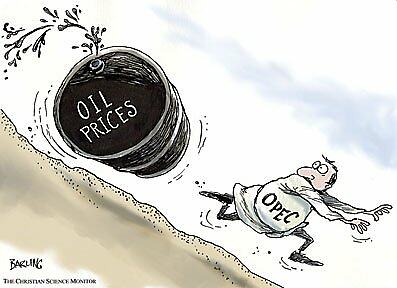
Column 6 - Declining oil price
Since a few months the oil price decreases. The oil price is measured in dollars per barrel. In June 2014 it had reached a maximum of $115,- for one barrel, but declined afterwards and currently the price of a barrel has reached $48,- and is still declining. There are several reasons for the declining oil price (van Gessen, 2014) (Postma, 2014):
- Overcapacity: the US became self-supporting by their drill for shale gas and oil shale. Moreover, Libya and Iraq have their oil production increased, despite of war violence.
- Disappointing demands: the recent slowing international economy whereby the demand for oil decreases.
- Usually the OPEC keeps the oil price on a stable level by producing less or more. Currently, they don't decrease the production because several countries did major investments that should stay profitable and moreover, they have to pay off their loans. Because of that, the OPEC countries cannot reach an agreement about the turning of the oil taps.
- During threats for war violence in oil producing countries, the price per barrel raises. Currently, IS extremists own batches of oil that they try to sell on the black market. The OPEC lower the prices so IS cannot make a lot of profit out of their sales.
The prospect for the oil prices is that they are not likely to increase before 2016 (van Gessen, 2014). The prices will not increase because of the slow growth of the world economy and the continuing production of oil shale in the US. It is unsure to what extent the low oil prices have an influence on the prices for gas and diesel, because it depends on the rate of the Euro against the US dollar (van Vliet, 2014).
The uncertainty and the complexity of the oil prices apply also for the consequences for the environment. Several consequences are summed below (van Vliet, 2014):
- Decreasing fuel prices can result in an increase of car use and thus more emissions. Besides, the need for electrical drive cars becomes less necessary. On the other hand, a decreasing consumption slow down the growth of the world economy, with all the consequences that will entail.
- Sustainable energy projects have to compete with the low energy prices, which then takes more time to pay off the loans. However, oil shale and oil from the Artic area have also to compete with the low energy prices, which is preferable due to the environmental risks.
- According to Shenggen Fan, general director of the International Food Policy Research Institute (IFPRI), there's both a positive and a negative side on the decreasing oil price. Corresponding with the oil prices, the food prices will decrease as well. Less fortunate people are able to buy themself food.
- Finally, global safety does also not gain from these oil price fluctuations. The oil is produced in politically unstable countries. If a war breaks out (especially in the Middle East), sustainability is one of our least problems.
The actual consequences for the environment are hard to predict. It is likely that the oil price did not reached the bottom yet. How much the price will decrease and when they are increase again is impossible to predict. In the meantime, the fluctuation prices still cause a lot of misery for the economy, the human well-being and maybe as well for the environment...
Bibliography
Postma, R. (2014, 11 27). Waarom de olieprijs maar blijft dalen. Retrieved 01 10, 2015 from NRC Q: http://www.nrcq.nl/2014/11/27/waarom-de-olieprijs-maar-blijft-dalen
van Gessen, R. (2014, 11 28). 5 redenen waarom olieprijs daalt. Retrieved 01 10, 2015 from Telegraaf: http://www.telegraaf.nl/dft/geld/23386864/__5_redenen_waarom_olieprijs_daalt__.html
van Vliet, P. (2014, 12 30). Dalende olieprijs goed slecht voor de economie. Retrieved 01 10, 2015 from Duurzaam nieuws: http://www.duurzaamnieuws.nl/dalende-olieprijs-goed-slecht-voor-de-economie/
Christmas
Aournd Christmas always a lot of light light up the city. In shopping streets mostly for a longer time, in houses in the christmas tree also for a longer time, and in cities like Delft they have an annual 'lichtjesavond', this is one day of extra lights all over the city. Environmentally seen, this is not very responsible, but the extra 'gezelligheid' in the city is worth it, mostly. The last couple of year, however, in Amsterdam they have the 'light festival'. This started a few years ago with a few artistic sculptures in the water that were lit, now they have called it a festival. However, it is not enough to actually go to see. There are a few lit things in the canals, most of them small and only really visible from a boat. This, in my opinion, does not add anything to the cities look or feel, but does cost a lot of energy. It is things like these where we could save a lot of energy. Not by completely abandoning them, but by making them more energy efficient. Small thing like that can have a large impact if implemented on a large enough scale, like the ban of the incandescent light bulb. I think through those little changes we can achieve energy consumption without using fossil fuels.
Fellow Global Ocean Travellers

It is necessary to remember, that the 80% of our planet is water, not land. I would like to dedicate this column to the one of the topics regarding sustainability aspect of sea traffic- accidental seawater transportation by ballast ships.
It is necessary to remember, that the 80% of our planet is water, not land. I would like to dedicate this column to the one of the topics regarding sustainability aspect of sea traffic- accidental seawater transportation by ballast ships.
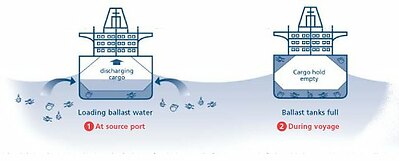
Why this problem is very important?
According to the GloBallast partnership organization ships’ ballast water can be identified as the fourth major threats for the world’s ocean and its biodiversity. Ahead are only land-based sources of marine pollution, overexploitation of living marine resources and physical alteration/destruction of marine habitat.
Every year around 3-5 billion tonnes of water is transported in the hulls of the ships. Presnted figures show ballast tanks and water cycle while loading and discharching the ship.
This results in the transportation of not only water, but also invasive marine species introduced to new environments and affecting their bio systems. On the one hand, the solution for the problem lies in proper water filtration. In 2004 the International Convention for the Control and Management of Ships' Ballast Water and Sediments (BWM) was adopted: “The Ballast Water Management Convention aims to prevent the spread of harmful aquatic organisms from one region to another, by establishing standards and procedures for the management and control of ships' ballast water and sediments.” It states that ships are required to have proper certificate which states that they are being surveyed regarding ballast water quality. Ships can be inspected by state control officers, who can verify the validation of the certificate, inspect the Ballast Water Record Book or sample the ballast water.
However, all these actions take a lot of time that ships do not usually have in the harbour. Moreover, evaluation of water tank quality is also quite long process. Therefore, despite the measures that have already been taken, the ballast water is still a problem that has to be solved, maybe using new technologies. This results in the transportation of not only water, but also invasive marine species introduced to new environments and affecting their bio systems. On the one hand, the solution for the problem lies in proper water filtration. In 2004 the International Convention for the Control and Management of Ships' Ballast Water and Sediments (BWM) was adopted: “The Ballast Water Management Convention aims to prevent the spread of harmful aquatic organisms from one region to another, by establishing standards and procedures for the management and control of ships' ballast water and sediments.” It states that ships are required to have proper certificate which states that they are being surveyed regarding ballast water quality. Ships can be inspected by state control officers, who can verify the validation of the certificate, inspect the Ballast Water Record Book or sample the ballast water.
Sources:
1.http://globallast.imo.org/problem.htm
2. http://www.imo.org/About/Conventions/ListOfConventions/Pages/International-Convention-for-the-Control-and-Management-of-Ships'-Ballast-Water-and-Sediments-(BWM).aspx
Sustainable, enduring and lasting
The definitions of sustainability.
Sustainability has become a word so widely used that most people, including me think right away of ecological, organic, fair and honest. The most common interpretation of these words is ‘not harmful for the environment’.
literally sustainable means maintainable, endurable and lasting. This insinuates that if something is sustainable, it will exist for a long time.
What I want to talk about is the two ways of putting this maintainability into practice. I will explain this using the recognizable example of the coffee cup. One point of view of the sustainable coffee cup is that it is the best to use biodegradable cardboard coffee cups which are disposed after one time use. This can be seen as sustainable because the cardboard will be recycled and will last this way through time. Another position is to make a cup out of plaster and use it many times for a longer period, that is durable seen in another perspective.
The same disunity is visible in architecture. In some architect’s opinion it is best to use materials that are biodegradable or recyclable after use, structures need to be light, have small impact on the area and might only be in use for twenty years. It might me structures that are able to be disassembled and assembled again in another place or used in another building. Others are convinced that it is more sustainable to build a heavy building out of metal and concrete so that it will last through time, these buildings need to be flexible from the inside so that the building can be used for different functions and purposes through time.
For both there are pros and cons, and they are both in their own way sustainable although they are so fundamentally different in approach. This is the same with the example of the coffee cups. Often the complaint is heard that the term sustainability is so wide and vague, these examples might have shown why. In my opinion it is time to make clear what kinds of sustainability exist and come up with clear definitions. This way it will be much better understandable why a certain products is justifiable instead of just naming it ‘sustainable’.
Renewable fuels, an answer to peace?
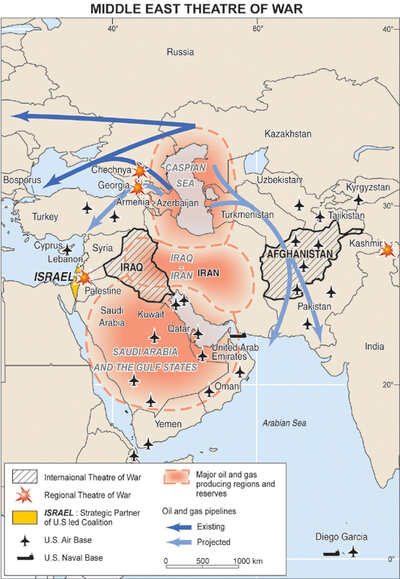
As we all know the oil supply of the world is rapidly decreasing. If we continue consuming oil at the same rate, the current oil reserves will have run out within merely 40 years. (ImechE 2014) This means that by the time I am 64 I can no longer drive a car which is driven by an oil engine. My grand children will be born in a world with no oil reserves left. Imagine the impact this will have on the world. Luckily, we are already trying to reduce our dependability towards oil by switching to renewable fuels, to be able to continue our energy driven lifestyle.
At the same time, fellow students are researching new or better ways of oil extraction to improve its efficiency. In the hope that, this will lengthen the run-out period. If the efficiency of oil extraction can be improved by one percent, the entire world population can be supplied with oil for one extra year.
However, by the time we are there, the population will have doubled, and their consumption will have increased due to expanding industrialization. A great cause for concern. Currently two-thirds of the world’s reserves are in the Middle East. The North Sea can only provide a small percentage of that. This causes us to be largely dependent on other countries if we do not change our fuel consumption or our lifestyle. The latter seems quite unlikely. Although Europe consumes more oil than available, the USA is the largest oil consumer of the world. Using 26% of the total world consumption yearly of which 56% is imported. In the Middle East exploitation cost as far lower than those of deap sea drilling. Therefore, it is highly beneficial to have access these oil routes. This dependency on the Middle East is a main cause of the power struggle between the United States, the UK, France, Russia and China to take action against Iraq. Although the UN Security Council debate resulted in a compromise, the US and the UK continue to bomb the “no-fly zones” with the excuse they would protect the locals in these area. This oil battle seems to be a never-ending story, until the day arrives on which, the oil reserves have become empty. But do we really need this battle to continue for 40 years?
Currently 4,5% of the energy consumption in the Netherlands comes from renewable fuels. (CBS 2013) In the year 2005 this was only 1,4%. If we can continue this growing rate we can be self-sufficient by 2050. But, taking into account the current technological developments in this field, we can assume this can be much sooner. So let this be an encouragement for all of us, to consume less and contribute to technological innovation so we can live to see the day in which we manage to co-exist in peace.
http://www.theguardian.com/sustainable-business/2014/jun/04/energy-independence-national-security-sustainability
CBS (2013). Hernieuwbare energie in Nederland 2013. Den Haag, Centraal Bureau voor de Statistiek.
ImechE (2014). "When will oil run out?". Retrieved 18 January 2015, from http://www.imeche.org/knowledge/themes/energy/energy-supply/fossil-energy/when-will-oil-run-out.
What about the fun factor?
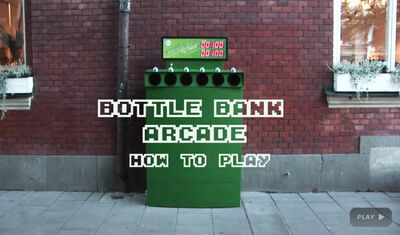
While researching for sustainable happiness, I found out that the need for the transition towards a sustainable society is closely related to the concept of sustainable happiness, defined as the pursuit of happiness that does not exploit other people, the environment, or future generations (O'Brien, 2008). Moreover, two kind of values were related to the ideals of sources of their happiness: intrinsic and extrinsic values. The former are related to people’s internal development, relations with others and well-being, such as self-acceptance, physical fitness and community involvement. The latter are related to more materialist means and external recognitions, such as financial success and popularity. In pursue for sustainable happiness, intrinsic values are prioritized as the ones generating more engagement with environmentally friendly behaviors and with the construction and strengthen of social cohesion.
It can be said that our entire research was focused on thinking of ways to make a societal switch of values towards intrinsic ones, and shaping human behaviors is the biggest challenge sustainability initiatives face when trying to integrate with the current lifestyles present in our society. Moreover:
- How can you shape behaviors without directly telling to people how to live?
- How can you take advantage of people’s current values to facilitate the desired transition?
- How to make people prioritize experiencing sustainable happiness if they are satisfied with the way their life is now?
The latter were questions constantly analyzed during the thinking process of our sustainability concept. However, the bar was set even higher since, as part of one of our lectures, we were challenged to think outside conventional terms to try to integrate the fun factor into our design.
Through more research, I found an initiative held by Volkswagen that started in Sweden and is called the Fun Factor Theory. The theory is based on the simple though that “fun is the easiest way to change people’s behavior for the better”. As such, it has created an award to encourage participants to identify a situation that they identify as problematic for community well-being, the environment or any other matter, and then wonder how to test the efficacy of fun theory on changing the desired behavior on people. Several proposals were presented to encourage the use of seat belts in cars, reducing driving speed, and increase the use of garbage beans, stairs and recycling sites, among others.
I was amazed and inspired by all the impact that such small changes had on people’s behavior. I agree that it is necessary for people to experience sustainability with a different approach, to understand that is not about changing their entire lifestyle from one day to the other, and that decreasing their ecological footprint can give them satisfaction beyond financial terms. Now, it is easy to imagine, as the lecturer showed us on class, how to make people experience for shorter periods what it is to use sustainable means to sustain our current lifestyle (e.g. by using solar panels as energy provider for a Jacuzzi located in the middle of a summer event).
However, it is difficult to imagine how to make sustainable related products more enjoyable, how to make sustainable projects more interesting to people by including the fun factor on them. Sometimes sustainability is seen as a serious topic that needs to be addressed through serious means, but what if the only thing needed is to make it looks desirable, enjoyable and fun. I am facing myself the challenge of achieving such switch of mindset; I believe it requires us to challenge our perspectives on life and try a little bit harder and to think a little bit simpler. This topic may sound irrelevant in a world full of big technological changes and solutions but innovation in the way we experience life and sell an idea is not only essential to our professional skills but also to our long-term life quality and survival.
References
O'Brien, C. (2008). Sustainable happiness: How happiness studies can contribute to a more sustainable future. Canadian Psychology/Psychologie canadienne, 49(4), 289.
TheFunTheory.com (2009). Fun theory awards. Retrieved from: http://www.thefuntheory.com/
How to eat sustainably

Food is an important part of many peoples' lives. It is one of the reasons why my first column was devoted to a simple idea to reduce wood waste. During the last few months, I have been trying to slowly improve my diet and to become a more sustainable eater.
Many people do not see that their eating patterns and food choices have a huge impact on the environment. Since we do a lot of research before purchasing a new camera, a computer or a smartphone, why not spend a little time to learn about the food you're eating?
First of all, why should we eat more sustainably? According to Sustainable Table:
- Sustainable foods are healthier and taste "better". They are grown with fewer and less toxic pesticides. Meat is raised without antibiotics or hormones, and the foods are not genitically modified or irradiated. Since sustainable food is local, it doesn't travel as far as conventional foods. This means the fruit is picked closer to its peak ripeness.
- Sustainable foods are grown in a more sustainable manner for the farmer, as well as the workers on the farm.
- Sustainable farming supports local economies.
- Sustainable farming produces less waste.
- Local small and medium size farms aren't as water, chemical and fossil fuel intensive and create as much waste.
(http://www.sustainabletable.org/568/do-you-have-to-eat-100-local-sustainable-and-organic)
Knowing this, how can we improve our current diets to make ourselves healthier, whilst also becoming more sustainable?
For me, the most important step is to eat less meat. I was raised by my Dutch father and Brazilian mother, with both their own culture and eating habits. In Brazil, meat is a speciality and I cannot disagree when people say it is delicious. However, reducing the amount of meat you eat is crucial to becoming a more sustainable consumer of foods. The standard North-American diet requires a shocking 15899 litres of water daily, whereas a vegan diet only consumes 1136 litres of water daily. These water uses can be attributed to irrigation of crops, drinking water for animals, processing and washing etc. (Since I have used North-American examples in the columns before I also chose to use it here)
http://www.care2.com/causes/10-reasons-why-the-meat-and-dairy-industry-is-unsustainable.html
Since acquiring more information about this, I chose to reduce my meat consumption by opting for vegetarian meals at least once a week.
Another simple tip to become a more sustainable eater, is to eat seasonal vegetables and fruit. This means that you promote locally produced seasonal food instead of purchasing E.G. pineapples from Paraguay. Next time, when choosing what to eat, look at the vegetable and gruit calendar made available by Millieu Centraal:
(http://groentefruit.milieucentraal.nl/groente-en-fruit-kalender/groente-en-fruit-kalender/zoeken/formulier?utm_source=mc&utm_medium=banner&utm_campaign=groente-en-fruitkalender)
E.G. Choose to eat andijvie (Endive Lettuce) during the summer instead of the winter, since then it is produced in the Netherlands instead of Spain.
Myers Briggs Test
Working in groups is a newer concept that is important for the 21st century. Companies, universities and other groups are emphasising on a lot of working in groups. However, people have inherently different personalities. Some are extroverts while the rest are introverts. Each person is different and has his own style of working. While working in groups it can be identified qualitatively through each person’s behaviour how he fits in. However, this is not very accurate. To get an accurate analysis of the person’s personality there is a test called the Myers Briggs Test.
After answering a set of 60 odd questions the person is classified into one group out of the 16 possible outcomes. For the sake of explanation two cases have been highlighted below.
- ‘ENTJ’ where ‘E’ – Extroverted, ‘N’ – Intuitive, T – Thought, ‘J’ – Judging
- ‘ISFP’ where ‘I’ – Introverted, ‘S’ – Sensing, ‘F’ – Feeling, ‘P’ – Prospecting
The brief explanations of each letter is shown below.
- Favourite world: If get you like the outside world more (E) or if you get like the inner world (yourself, your immediate surroundings) more (I).
- Information: You take information as is given and keeping in mind what has been said (S), or read between the lines (N)
- Decisions: When making decisions you choose to make them based off of facts and data (T), or you choose to make them based on other people’s choices and circumstantial.
- Structure: When working your choice is to work according to a plan (J), or you choose to plan according to circumstances and are flexible (P).
The possible outcomes are 16 as shown in the figure below.
Depending on which archetype you fall under jobs, relationships, strengths and weaknesses are explained. So this gives a more objective understanding of yourself.
Beyond this there are 8 functions which are highlighted as well of which any individual will have only 4. And based on the 16 personality archetypes 4 of these ‘8’ functions will be in order of ‘Dominant’, ‘Auxiliary’, ‘Tertiary’ and ‘Inferior’. These are shown in the figure below
- Introverted Feeling: People tend to usually discuss their morals and ideals inwardly
- Extroverted Feeling: People are usually aware of the feelings and the mood around them
- Introverted Thinking: People rationalise internally and think about things before you say it
- Extroverted Thinking: People use charts, diagrams and pictures to explain what they feel.
- Introverted Sensing: People tend to use stored data from the past and make a decision on how things have gone previously.
- Extroverted Sensing: People are aware of the world around them from their 5 senses
- Introverted Intuition: People tap into new ideas and realisation and make predictions based off of what had been done in the past.
- Extroverted Intuition: People interpret situations and pick up on signals and from other people’s emotions.
This test can give a serious understanding of your own personality or of others. A shrewd manager knows how to balance the groups with a mix of many of these individuals. However, the test cannot always be 100% accurate because of human errors while giving the test. The individual may be biased to certain questions etc.
I had taken the test once 2 years ago and then I had taken it again a couple of weeks ago the results and the change is fascinating. My archetype changed from one to another not drastically. Possibly due to a change in surroundings and ideals. So taking this test regularly can show how your character has changed over the past months/years. I would really recommend taking this test.
The link is here: http://www.16personalities.com/
REFERENCES:
- http://www.myersbriggs.org/my-mbti-personality-type/understanding-mbti-type-dynamics/the-eight-function-attitudes.htm
- http://understandmyersbriggs.blogspot.nl/2012/12/the-8-cognitive-functions.html


 Derek van den Berg
Derek van den Berg

 Klara Bergman
Klara Bergman

 Bertien Broekhans
Bertien Broekhans

 Cheyenne Schuit
Cheyenne Schuit
 Antonio D'Aquilio
Antonio D'Aquilio
 Elia Galiouna
Elia Galiouna
 Thalia
Thalia

 Borris
Borris
 Iris
Iris

 Jesper Goorden
Jesper Goorden

 Tatiana Armijos Moya
Tatiana Armijos Moya

 Pinal Desai
Pinal Desai

 Stefan Olsthoorn
Stefan Olsthoorn
 Dennis
Dennis

 Thijs Schaap
Thijs Schaap
 Lizet
Lizet

 Rosanne
Rosanne
 Stefan H
Stefan H


 Nora
Nora
 Irina
Irina
 Yannick
Yannick

 María José Galeano Galván
María José Galeano Galván

 Pieter van Hall
Pieter van Hall

 Syed Aaquib Hazari
Syed Aaquib Hazari